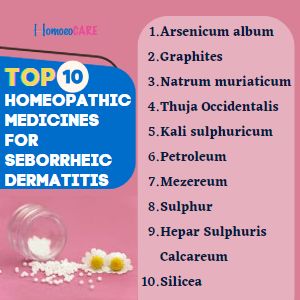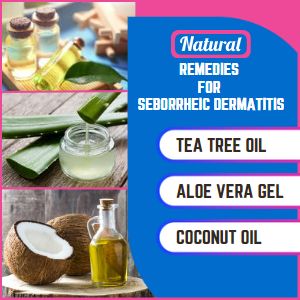Copyright © 2025 Homoeocare. All Rights Reserved.
Powered By
Seborrheic dermatitis is a chronic inflammatory skin condition that affects areas of the skin rich in sebaceous (oil) glands. Commonly found on the scalp, face, chest, and back, it results in red, scaly, and sometimes itchy patches. This condition is also known as seborrheic eczema and is typically caused by an overproduction of sebum, which provides a fertile environment for yeast, particularly Malassezia, to thrive.
The exact cause of seborrheic dermatitis is not entirely understood, but several factors may contribute to its development:
The symptoms of seborrheic dermatitis can vary but typically include:
Seborrheic dermatitis is usually diagnosed through a physical examination of the affected skin. A dermatologist may take a skin biopsy if necessary to rule out other conditions with similar symptoms.
Traditional treatments focus on managing the symptoms, as seborrheic dermatitis tends to be chronic and relapsing. Some common options include:

Homeopathy offers a more natural approach to managing seborrheic dermatitis by focusing on improving overall immunity and the body’s natural healing mechanisms. Here are some top homeopathic remedies that can be effective in treating seborrheic dermatitis:
Before beginning any homeopathic treatment, it’s important to consult a qualified homeopathic doctor to ensure the remedy is suited to your specific symptoms and medical history.

In addition to homeopathic treatments, several natural remedies can help soothe and manage seborrheic dermatitis:
While it may not always be possible to completely prevent seborrheic dermatitis, the following practices can help minimize flare-ups:
At HomoeoCARE, seborrheic dermatitis is treated holistically by enhancing the immune system’s function. By focusing on natural healing, homeopathic treatments address the underlying causes, including immune system irregularities and yeast overgrowth, helping individuals achieve long-lasting relief.
For personalized treatment, it’s best to consult with a homeopathic specialist who can recommend the appropriate remedies tailored to your symptoms.
HomoeoCARE, we’ve built a reputation as one of the top homeopathic clinics in Mumbai, offering solutions where traditional medicine hasn’t been able to help. Experience the healing power of homeopathy through our online homeopathy consultation with experienced online homeopathy doctors. But don’t just take our word for it check out our case studies to see how we’ve positively impacted the lives of so many individuals and families with our unique approach to healthcare.
Copyright © 2025 Homoeocare. All Rights Reserved.
Powered By